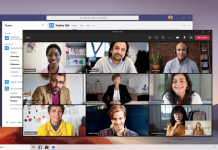
You might remember that Razer previously teased a 5G portable gadget with a cloud gaming focus. The system, which the business names the Razer Edge—yep, Razer finally went there with its branding—was formally announced by the company at RazerCon.
The Edge’s 6.8-inch AMOLED panel has 2,400 x 1,080 pixels and features a 144Hz refresh rate. According to Razer, the display boasts 87 per cent more pixels than comparable products. For instance, the screen on the Steam Deck has a resolution of 1,280 by 800. The Gorilla Glass touchscreen on the Edge also features a 288Hz sampling rate, so it should be rather snappy.
On this gadget, Razer collaborated with Qualcomm and Verizon. The Snapdragon G3x Gen 1 Gaming Platform, created especially for the Edge, serves as its operating system. Along with active cooling and six air vents, the smartphone boasts an Adreno GPU and an octa-core Kryo CPU running at 3GHz. Early benchmarking results, according to Razer, demonstrate that the Snapdragon G3x Gen 1 offers speeds that are two to three times faster than those of common smartphone platforms like the Snapdragon 720G.
Along with a 5,000mAh battery and 128GB of storage, the smartphone boasts 8GB of LPDDR5 RAM. There are two-way speakers with Verizon Adaptive Sound and a pair of digital microphones on the audio front. You have the ability to broadcast your games via the webcam as well.
The Edge is made up of a new Razer Kishi V2 Pro controller and an Android 12 tablet. The latter contains customizable buttons, a D-pad that Razer calls “ultra-precise,” microswitches, and the same analogue triggers as the Kishi V2. The Kishi V2 Pro stands out because it contains a 3.5mm headphone port and HyperSense haptic feedback. The tablet and controller weigh 400.8 grammes, or a little under a pound when combined.
The Edge will include preinstalled launchers for Epic Games, Xbox Cloud Gaming, and Nvidia GeForce Now when it launches, and it will initially only be available in the US. Additionally, you’ll have access to remote play services like Parsec, Moonlight, and Steam Link.
Connectivity is important because this gadget is designed for cloud gaming. According to Razer, the Edge includes WiFi 6E, which operates on a 6GHz channel that is “uncongested” and supports the multi-gigabyte capacity for fast download and upload speeds. If you have the correct model, you can use 5G to connect to cloud gaming services while you’re on the road.
Verizon is the only provider of the Razer Edge’s 5G variant. Pricing and precise availability will be determined later, although it is anticipated to be released in January, roughly concurrent with the WiFi model. You may get that version for $400 via Razer’s website and RazerStore locations. One can be reserved for a $5 refundable deposit. The standalone Kishi V2 Pro controller’s price and availability have not been disclosed by Razer.
Although the WiFi model’s price is not trivial and the 5G version probably costs more, the features appear to be good for the money. If you’d prefer not to use your phone as a controller and you don’t want to carry around a Steam Deck, it looks like a choice worth taking into account for cloud gaming while on the road.
There are other portable devices geared at cloud gaming besides the Razer Edge. Next week will see the release of Logitech’s $350 G Cloud Gaming Handheld, which does not support WiFi 6 or 6E. Additionally, some well-known firms are focusing on cloud gaming. This week, Google unveiled three Chromebooks made by Acer, ASUS, and Lenovo specifically for streaming video games.
At RazerCon, Razer unveiled a number of new products in addition to The Edge. The business displayed its Hammerhead HyperSpeed earbuds with the Kraken Kitty V2 Pro wired headset, which has an interchangeable rabbit, bear, and cat ears with Chroma RGB lighting, as well as some other equipment.
In order to reduce latency, the earbuds have Chroma RGB, active noise cancelling, Bluetooth 5.2, and a 2.4GHz connection (with a USB-C adapter you may insert into your console or another device). With additions from the charging case, Razer promises a total battery life of up to 30 hours. There are Xbox and PlayStation versions of Hammerhead HyperSpeed. In November, the $150 earphones will be made accessible.














































